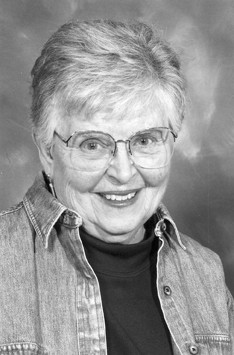Rabbitbrush Rambler: Creating a normal school

Teacher education has been such an important part of Adams State’s program for so long that it seems logical for ASU now to be awarding doctoral degrees in education at Adams State University. The journey to diplomas had begun 93 years ago when it was for a teacher’s certificate, but for three quarters of a century it had been granted by Adams State College, a four-year school with a more diversified program.
Earlier, in the 1930s, the name had been Adams State Teachers College, preceded in the late 1920s by of the name Adams State Teachers College of Southern Colorado. Nevertheless, it was the two-year Adams State Normal School that was authorized by the state legislature in 1921.
The original purpose was teacher training, and the need was apparent in rural parts of this state and others, including San Luis Valley. For instance, teachers for one-room schoolhouses sometimes were being hired with only a high school diploma, although teachers in larger schools sometimes held not only the required certificate but also additional study in an academic subject. Sometimes, though, it just depended on who was available for the job and how much money residents were able or willing to spend.
What seems special to me is how important many folks at that time felt schools were, despite the hurdles. After all, this part of the state never was known for its affluence, and means to travel a great distance for teacher training could be prohibitive. And, let’s face it, many people from rural areas did not feel comfortable or able to compete in more sophisticated settings. Facility in language was another barrier.
Many miles away Colorado’s principal school for teacher training was at Greeley, which had opened in 1890 as a two-year school with the name Colorado State Normal School. Renamed in 1911 as Colorado State Teachers College with a four-year program Greeley had assorted other titles subsequently, but since 1970 it has been called the University of Northern Colorado.
In Europe and the eastern United States, normal schools had existed for centuries with one name or another. Mexico had a normal school in the 1800s. Colorado Territory had an office of public instruction as early as 1870, and when new states came into existence in the hinterlands, one of the priorities was to have normal schools, but in Colorado they were pretty slow to appear.
Their purpose was to prepare teachers to proficiently teach the specific subjects that their students were expected to know, at a level of the norm that was considered acceptable, i.e. normal. Today’s public schools still are expected to bring students to the levels of appropriate norms in basic subjects, using standard measurements of performance.
Out in rural Colorado’s hinterlands, many adults and kids, too, had become aware that public instruction was sometimes inadequate for success in the rapidly changing outside world. Large schools in cities like Denver or Colorado Springs had a few excellent schools with fine reputations, but people in rural neighborhoods and towns also needed better ones to meet their needs.
Gunnison sought and won a state normal school, the first on the Western Slope. It opened in 1911 and became the more diversified Western State College of Colorado in 1923. So, why not the San Luis Valley?
At last, in 1921, the state legislature authorized a normal school to be built at Alamosa. It opened in 1925, and soon its enthusiastic but shivering students and staff needed a larger heating plant. Funding from the state legislature was always a big if, but miraculously in the 1930s there appeared two residence halls, a gym, and an extension on the north side of the administration building, Richardson Hall, where all instruction was taking place.
The great story is still continuing.



